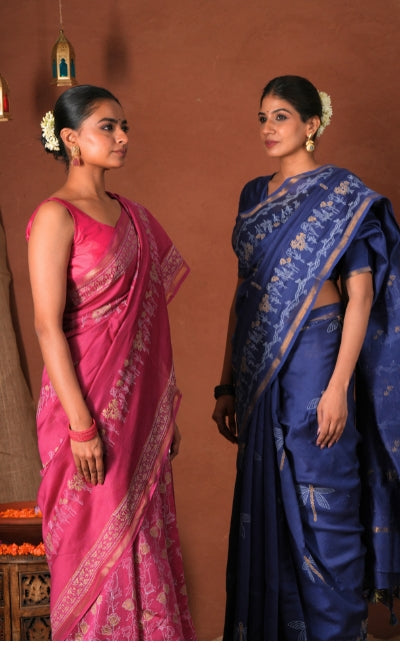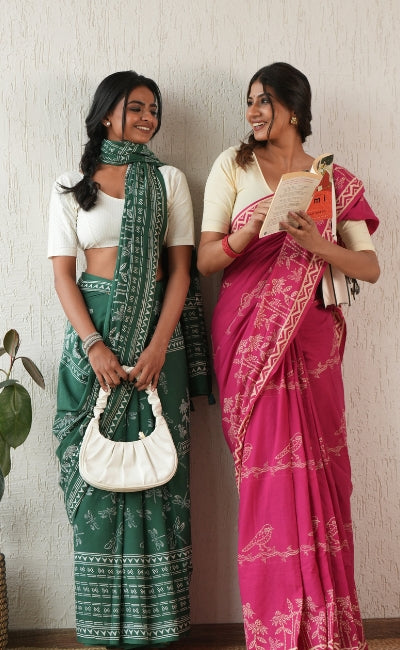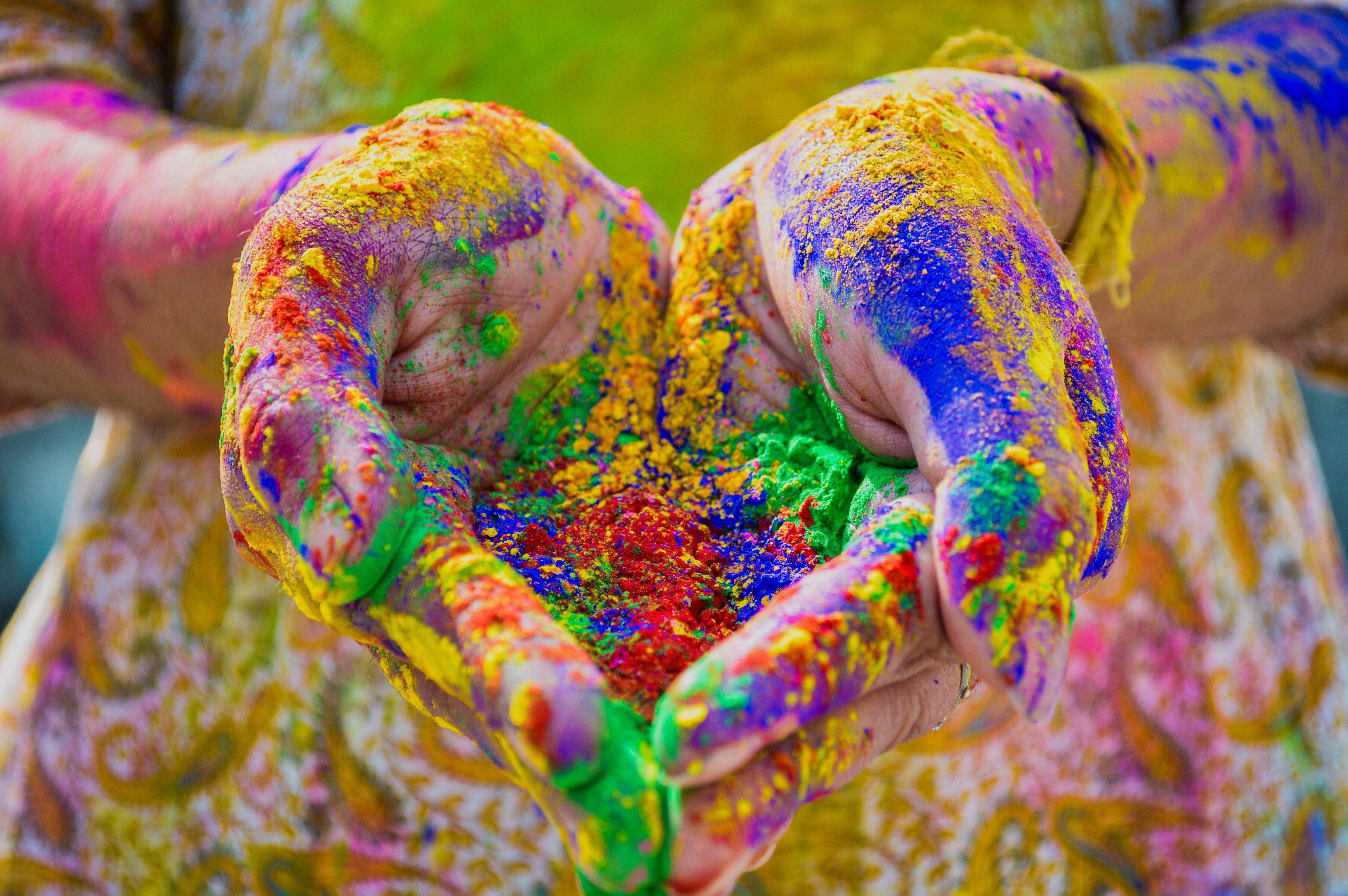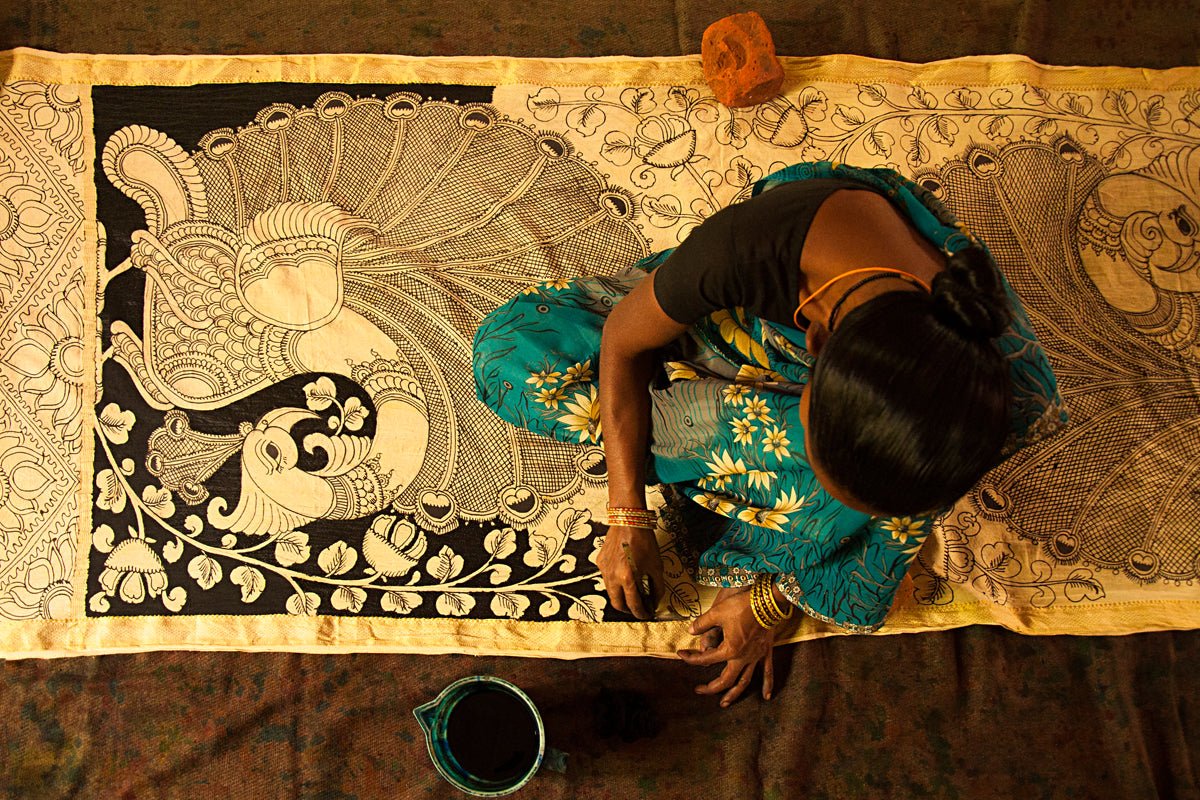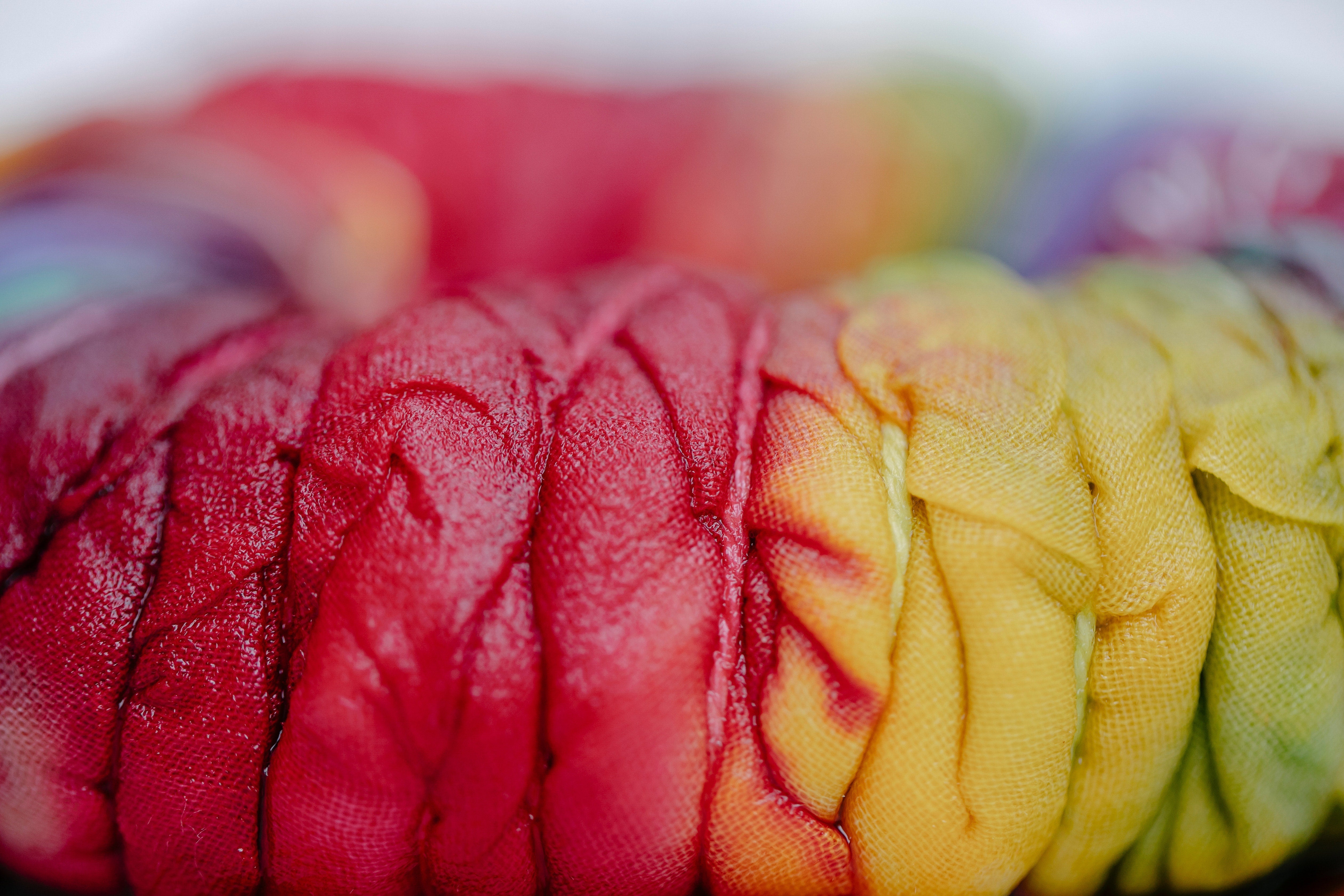
Things You Should Know About Your Dye and Tie
At Sootisyahi, we believe in dye and tie hand block print clothing.
Fabrics are dye and tie to give them color. Fabric dye and tie are utilized in a variety of ways. There are many types of dye and tie, but natural and synthetic dyes are the two most common. Natural dyes are manufactured by extracting natural pigments from plants, animals, and minerals, as the name implies. Fabric dyes manufactured in a laboratory, on the other hand, are synthetic.
Fabric dyes come in various colors and are used in different color materials. SootiSyahi provides clothing and home items made from natural dye and tie to ensure 100% safety and eco-friendliness.
We at SootiSyahi believe in keeping the environment and our people safe from any harmful chemical reaction. Our artisans have mastered the natural dyeing process to ensure high-quality results. Every member of our team is well-versed in the art of dye and tie, and we provide the best block-printed designs and clothing in the market.
Learn About the Dye and Tie
We all know what a dye and tie is, but have you considered whether or not it is suitable for your body, and is it eco-friendly?
A dye is a colored substance that may be fixed to fabric and is generally employed in solution. But what's the best dye and tie? It's the one that is 'fast' or chemically stable, meaning it won't wash off with soap and water, fade in the sun, and so forth.
Dyeing is usually done in a specific solution that contains dyes and other chemicals. Dye and tie molecules form an uncut chemical connection with fiber molecules after dyeing. In dyeing, time and temperature management are two important elements. Different types of dyes are available on the market. This blog will assist you in identifying good or natural dye and tie kinds for your clothing fabric.
Regular Dye and Tie
"Dye and tie is defined as a chemical that has both chromophore and auxochrome groups." Because of its saturation, the chromophore group is responsible for dye color. The auxochrome group controls the dye and tie fiber response.``
Natural Dye and Tie
Dye and tie compounds obtained from natural sources are known as natural dyes. Although natural dye and tie were once the dominant source of color, synthetic dyes have mostly replaced them because they are more reliable, less expensive, and more readily available. Hematoxylin, carmine, and orcein are examples of natural dye and tie still used.
Man has been using coloring materials for thousands of years. This has been done to leather, linen, food, pottery, and even houses. Natural dyes are still used in some of our most common dyes. Natural dyes are what they're called. This is used as a classification and naming scheme by the Color Index.
Each dye and tie is given a name based on the pattern
Negatively charged natural dye and tie is common. Natural dyes that are positively charged do exist, although they are uncommon. In other words, the anion is usually the colored component of the molecule. Although the molecular charge is frequently indicated on a specific atom in structural equations, the charge is applied to the entire molecule. Many natural dye and tie, although not all, require the addition of a mordant.
Synthetic Dye and Tie
Synthetic dye and tie are organic or inorganic dyes generated from organic or inorganic compounds. Basic, Reactive dye and tie, Direct, Acid, Mordant, Metal complex, Vat, Sulfur, Disperse dye and tie, and other dye and tie fall within this category. Synthetic dye and tie quickly supersede natural dyes.
They were less expensive, offered a broader spectrum of new hues, and gave dyed materials superior characteristics. Dye and tie is currently categorized based on their application in the dying process.
There are several different types of dye and tie
Acid Dye and Tie
Acid dye and tie is anionic dyes that include one or more sulfonic acid substituents or other acidic groups that are water-soluble.
Acid dyes are water-soluble anionic dyes used in neutral to acid dye baths to dye fabrics like silk, wool, nylon, and modified acrylic fibers. Cellulosic fibers are unaffected by acid dyes. This category includes the majority of synthetic food colors.
Basic or Cationic Dye and Tie
This series of synthetic dyes was the first to be removed from coal-tar derivatives. Later advances have essentially superseded them as textile dyes. Discharge printing and the preparation of leather, paper, wood, and straw continue to employ them. They've recently been employed successfully with several prepared fibers, mainly acrylics.
Basic dye and tie was initially used to color wool, silk, linen, hemp, and other textiles without adding a mordant or employing agent. Use it on cotton and rayon with a mordant like tannic acid. Acrylic fibers are dyed with basic dyes, which produce bright colors with great fastness. Use them on basic nylon and polyester dyeable variations.
Direct Dye and Tie
These are dye and tie that can be applied to fabrics straight from an aqueous solution. These are especially useful for materials that can generate hydrogen bonds when dyed. The direct dye and tie, the most basic ones, were generally praised because they eliminated the need for a mordant or binder for dying cotton.
The colors aren't as vibrant as the basic dye and tie, but they're more resistant to light and washing and can strengthen the resistance after treatments (diazotized and developed.) Cotton, linen, rayon, wool, silk, and nylon can all be dyed with direct dyes. Azole bond –N=N- and a high molecular weight are common features of these dyes. Because of the sulfonic acid groups, they are water-soluble.
Azoic Dye and Tie
At least one azo group (-N=N-) is connected to one or two aromatic rings in azo dye and tie. Because most other quick dyes lack effective red dyes, these dyes are primarily employed for brilliant red hues in dyeing and printing. Azoic dyes, often known as naphthols, are made by putting one-half of the dye into the fabric. The other half is then applied, and the two colors are combined to make the final color. They don't hold up well to rubbing or crocking unless used carefully and thoroughly.
For example, the following two components can make a bluish red azoic dye and tie.
Nitro Dye and Tie
Polynitro derivatives of phenols with at least one nitro group ortho or para to the hydroxyl group are known as nitro dyes. Wool is dyed with it. It comprises at least two aromatic rings (benzene, naphthalene).
Disperse Dye and Tie
Disperse dyes were first initiated to color secondary cellulose acetate fibers. These dyes are moderately water-insoluble and are ground into a fine powder in the presence of dispersing agents before being dyed. A suspension of dye particle dispersion creates a highly dilute solution of the dyes in the dye bath, which is then absorbed by the fibers. Polyester, nylon, acetate, and triacetate fibers are dyed with this dye and tie class.
Vat Dye and Tie
The vat dyes are complex polycyclic compounds that are insoluble and have a quinone structure (keto forms). The term vat comes from the old indigo dyeing procedure of reducing indigo to a light form in a vat. Indigo, anthraquinone, and carbazole are used to make vat dye and tie. They work well on cotton, linen, rayon, wool, silk, and occasionally nylon. Vat dyes are also employed in a continuous piece dyeing procedure in the pigment application method. This method produces dyeings with excellent wash and lightfastness.
Mordant Dye and Tie
Fabric Dyeing does not color the fabric directly; instead, a binding chemical known as mordant is used. The mordant works as a binding agent between the fiber and the dye and tie. Some dyes (mordanting) react with metal salts to generate insoluble colored complexes (lakes). Cotton, wool, and other protein fibers are commonly dyed with these ingredients. The metallic precipitate forms in the fiber, resulting in vibrant hues that are light and wash resistant.
Reactive Dye and Tie
These colors make a covalent connection with the cellulosic fiber. This results in colored fiber with exceptionally excellent wash fastness. These are dyes for fabrics with a reactive group that reacts directly with the fiber's hydroxyl or amino group. The color is rapid and lasts a long time because of the chemical reaction. This fabric dyeing technique can be used to dye cotton, wool, or silk. In the dyeing industry, there are many different types of reactive dyes.
Solvent Dye and Tie
This type of dye and tie is water-insoluble. The colors are soluble in alcohols, liquid ammonia, and chlorinated hydrocarbons. These colors are applied by dissolving them in a lipid or non-polar solvent, always a lipid. This is used as a classification and naming scheme by the Color Index.
Each dye and tie is given a name based on the following pattern: – solvent + base color + number. Synthetics, plastics, fuel, oils, and waxes are all colored with them.
Sulfur Dye and Tie
Sulfur dyes produce very dark colors with high washing resistance but low sunshine resistance. Cotton, linen, and rayon will be dyed, but not brilliantly. Sulfur dyes, particularly the black colors, have the effect of making the cloth delicate or weakening its structure, causing it to break readily. Sulfur dyes are applied to cotton using sodium sulfide as the reducing agent in an alkaline reducing bath. They are inexpensive and have good light, washing, and acid resistance.
Properties of Dye and Tie
These are low-cost dyes commonly used to create dark colors like dark greens, dark blues, and blacks.
These dyes provide excellent leveling and colorfastness. The contact between fiber and dye is established by extremely strong ionic bonds generated between the colorant's anionic groups and the fiber's ammonium cations. Chromium, or the metal ion, functions as a connection between the dye and the fiber, resulting in a solid bond and outstanding fastness properties.
SootiSyahi has high-quality dyed clothing and home items available. A list of all dyed fabric in the textile industry is available at our eCommerce store, like saree, kurti, dresses, curtains, quilts, and many more here. Different types of dyes are used for various applications. Dyes are categorized primarily based on their solubility and chemical characteristics.
On the other hand, natural and synthetic dyes are a well-known classification of dyes.
People can buy dyed fabric clothing (different prints, styles) at the greatest prices through SootiSyahi.
Finally,
Note that dye and tie is quite significant in the textile industry because dyeing makes the fabric more appealing. At SootiSyahi, you will get the finest clothing with natural dyes, even though the other textile businesses are using synthetic mainly dyes. SootiSyahi keeps the authenticity and tradition alive. Power granules and liquid dispersion dyes are examples of these sorts of dyes. Textile dyes must now rise to fulfill these new and particular technological standards.


